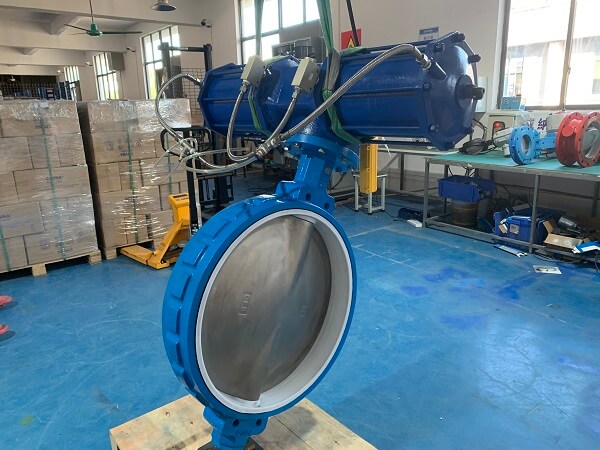1. Pneumatic Actuator Valve Should Be Noted In The Process Of Transportation
1.1 Pneumatic actuator valve should be installed on both sides of the light plug plate fixed seal.
1.2 Pneumatic actuator valves of medium and small caliber should be tied with Straw rope and transported in containers.
1.3 Large diameter pneumatic actuator valves are also easily packed in solid wooden frame to avoid damage during transportation.
2. Pneumatic Actuated Valves Should Be Noted In Preparation For Installation
2.1 Ensure the pneumatic actuated valve installation position the pipeline is in the coaxial position and the two flanges on the pipeline should be kept parallel. Make sure that the pipeline can bear the weight of the pneumatic pipeline ball valve, and if the pipeline can not bear the weight of the pneumatic Pipeline Ball Valve, the piping shall be provided with corresponding supports before installation.
2.2 Make sure that there are no impurities, welding slag, etc. in the pipe line. The pipe line must be swept clean.
2.3 Check the nameplate of the pneumatic actuated valve, open and close the pneumatic pipeline ball valve several times to make sure that the valve can work properly, and then check the details of the valve, to ensure that the valve intact.
2.4 Remove the protective caps at both ends of the valve, check that the body is clean, and clean the body cavity. As the sealing surface of the pneumatic pipeline ball valve is spherical, even small sundries can cause damage to the sealing surface.
3. Attention Should Be Paid To Air Actuator Valve In Installation And Use
3.1 Prior to installation and use of air actuator valves, the valve shall be inspected prior to installation and tested for on-off operation. Only in the normal operation of the conditions, can be installed to use.
3.2 Air actuator valves shall be installed so that the valve is as concentric as possible with the pipe flange and secured with support. Can not make the ball valve by other external force, so as not to damage the valve in the seal and valve deformation. Causes the valve switch not to be effective and the valve damage and is unable to use.
3.3 To ensure that the power supply provided by the balloon valve and pneumatic components shall be clean and free from oil and water as far as possible. Cleanliness should be less than 0.4 micron.
3.4 Devices such as gas supply lines, gas source interfaces and switches must be cleaned before they are connected to the gas source in order to prevent failure due to dirt and sediment from the dirty belt of the pipeline being washed into the pneumatic actuator unit.
3.5 For connection of pneumatic actuator, solenoid valve, positioner, filter, pressure reducing valve, etc. , copper or nylon pipe can be used. To prevent dust and reduce noise, muffler or muffler throttle valve should be installed in exhaust port.
3.6 After installation, the air actuator valve shall be tested, the pneumatic actuator shall be pressurized to the rated value, the pressure is 0.4 ~ 0.7 MPA, the pneumatic ball valve switch test, observe the opening and closing of the valve. Should turn flexible non-blocking phenomenon. In the switch such as the blockage phenomenon can increase the air pressure, repeatedly switch to switch the valve can be flexible.
3.7 when installing and debugging the switch type air actuator valve, first use the manual device to debug (the manual button on the solenoid valve) , after the normal action, the electricity is debugged.
3.8 Air actuator valve should be regularly maintained stem rotation, should be three months refueling (oil) once. The pneumatic execution unit and the air filter cooperating with it are discharged and polluted regularly. Under normal circumstances, check once every six months, once a year overhaul.
Post time: Jul-28-2021





